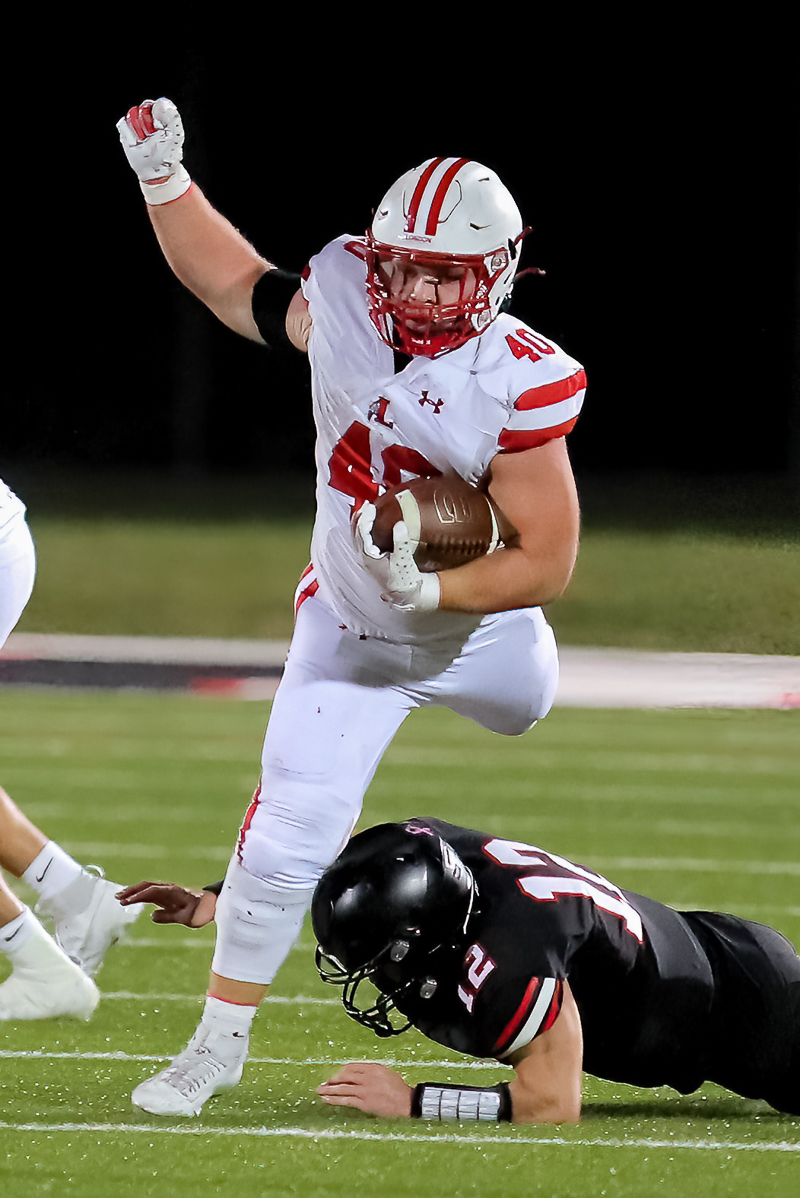
In three weeks of playoff football undefeated London (Div. III, #4 seed) has outscored opponents 93-33. (Press Pros Feature Photos)
The goal has forever been to bring more inclusion and competitive balance to high school sports, football in this case. Uh…have you seen the scores from last Friday’s regional semi-finals?
 This might sound like some defense attorney trying to make his case to a bench trial that wants nothing to do with his argument.
This might sound like some defense attorney trying to make his case to a bench trial that wants nothing to do with his argument.
In this case it’s my now decade-long position that more high school sports does not make better high school sports. Seven divisions and sixteen teams per region is currently making the counter argument for inclusion and added opportunity, because…it’s a fact of humanity that there’s only so many athletes to go around. If you question, check out the scores of three weeks of playoff football.

McSobers proudly supports high school sports on Press Pros Magazine.com.
Ups and downs do happen. It goes in cycles to some extent – even the best football schools who go through a cycle of more girls in their enrollment than boys. But eventually the numbers flip. They always do. It’s why Lincoln once said in his inaugural address, “you can’t escape history.”
In the case I’m resurrecting today, we’ve seen it since the early weeks of this football season. Lopsided scores where even teams within a division – in the same league – get run over by the proverbial one big kid in the class.
The traditional argument is that it takes a few weeks for lesser teams to catch up with the better teams. And I adhere to that in some cases.
But it didn’t happen for Covington this year, when the undermanned Buccs started out 3-1, then lost the next six games to the better teams in the Three Rivers Conference. And then a 58-0 playoff finale against Coldwater.
And there was certainly no catching up for a team like Troy Christian, who was outscored 506 to 39 in a winless season.
In fact, 15 of the 25 teams in Division VI, Region 28, failed to finish above .500, regular season. And that pattern follows, more or less, as you expand oversight around the other divisions in the state.
Now again to the argument that it takes a while to get all the parts working together in football, I agree. But how long? I would give you three to four weeks, but certainly not thirteen weeks. By that time someone should have figured it out. And when you look at last week’s regional semi-final scores across the state more than half of the 60-some-odd games on the Press Pros scoreboard were determined by a margin of four touchdowns or more. Now we’re approaching the best of the best at this point, and when a team like Cincinnati’s St. Bernard (the #5 seed) gets thumped 56-0 against Coldwater, it just doesn’t make the argument for inclusion or added opportunity.
St. Bernard, by the way, finished its regular season in Cincinnati with an 8-2 record, so you can imagine how weak the other Division VI schools are in Cincinnati, because 9-1 Division VI Cincinnati Country Day (the #2 seed) fell to Anna last Friday, 56-14.
Of course someone will point out that Anna and Coldwater are MAC teams, from the most competitive football conference, overall, in Ohio.
But that only further makes my point that the top teams continue to get better at the expense of the teams at the bottom. There’s not enough competitive middle ground in between…not enough for sixteen teams per region!
What I write makes some people angry, especially those in administration who’ve fully bought into the reality that mediocrity is OK as long as more people get to be mediocre. It’s like a weak full house in poker, when you’re holding 2s and 3s.

Publisher Sonny Fulks writes OHSAA sports and the Buckeyes for Press Pros Magazine.
In the meantime, however, half the population of Ohio recognizes this for what it is. We’re not getting better, we’re just getting more.
In Pennsylvania last week people there are saying the same thing about their own high school football, and the post-season – where they actually have 12 divisions, but in reality it’s different sections competing within six divisions. And in a local district final on Friday night it drew less than 500 people to see the #2 seed beat the #4 seed by five touchdowns…kinda’ like what happened between Anna and Country Day.
We’ve now had seven divisions for a decade, and sixteen teams per region for four years. Remember now that conventional football wisdom holds that at some point things get better after three or four games…in this case three or four years. I’d like to believe that for the sake of all those who really believe there’s enough athletes to spread between five sports and seven divisions.
I say I’d like to believe, too.
But it doesn’t mean I do.

